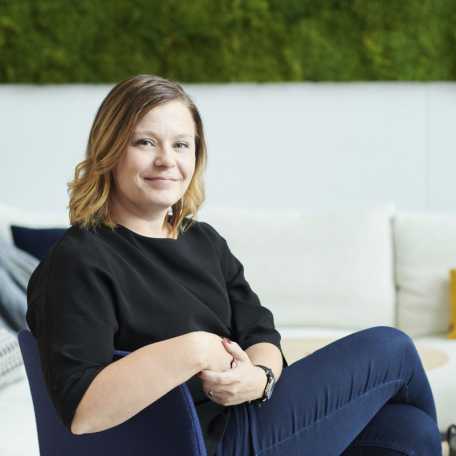Blog: Eeva Terävä, Head of Workplace Development, Martela
The discussion on activity based offices is heating up. In my work as a consultant, I continuously come across the downside of the hype, the fear that the basic needs of workers are not being taken into into consideration during this frenzy for change.
Attitudes towards this kind of working environment range from one extreme to the other: innovators bustling about on one end, those who need peace and quiet on the other. For some people, jam-packed open-plan offices with shared workstations and informal meeting places are the worst possible scenario, while others rave about how the new versatile work environment has transformed the ways of working completely and how they never want to return to the old.
The differences in opinions when talking about changes in the work environment have now been noted also by Finnish researchers.
A recent PhD dissertation by Jaana Näsänen provides an interesting discussion on how people can mean different things when referring to the same spatial change. The study shows how discourse supporting spatial change often remains at a strategic level and fails to present tangible proposals on how new spaces will increase innovation and intelligent interaction. On the other hand, those resistant to such change see it as a threat that hampers proper work and makes close colleagues more difficult to locate in the office. The narratives advocating and resisting change do not meet in the middle.
My change-resistant phase
Today, changes in the working environment are commonplace for me, but I've also been on the other side of the fence.
After graduating, I worked as a researcher, and spent a lot of time at my desk working on reports and analyses that required intense concentration. The number of staff at our office doubled unexpectedly after an acquisition and all workstations became shared, because management assumed we all did the same kind of mobile work as they. At that time, I represented the change-resisters. Soon after the change, I successfully lobbied for my own workstation in the quietest corner of the office, while the more mobile bunch crammed together to hustle and bustle at the other end.
Now, many years later, I’ve changed sides to join the work environment visionaries, who admire and rave about wonderful new facilities in which interaction, innovation and collaboration are much easier than before. This is natural for me, due to the transformation in my day job: I now only sit at a desk for around a fifth of my time, spending the rest of my time in meetings, on customer calls or different events.
Taking everyone's needs into account
It's difficult to see things from the other side.
We all react to change differently – some people react with their hearts and others with their minds. Some people are energized by change and find it easy to adapt, while others find it stressful and therefore feel more doubtful about it.
Visionaries see the big picture and consider how change will affect the entire organization, while practically oriented people tend to be interested in the details, such as where will my workstation be, what kind of office chair will I get, or what kind of floor material does the new office have.
The worst thing you can do is consider change purely from your own perspective. It is therefore not sufficient to discuss, or plan and implement, change based on the needs of just one group. We must consider the full range of staff, so that both bustling innovators and researchers in need of peace and quiet can find their places in the new premises.
Eeva’s blog was originally published on Rapal’s web site.
